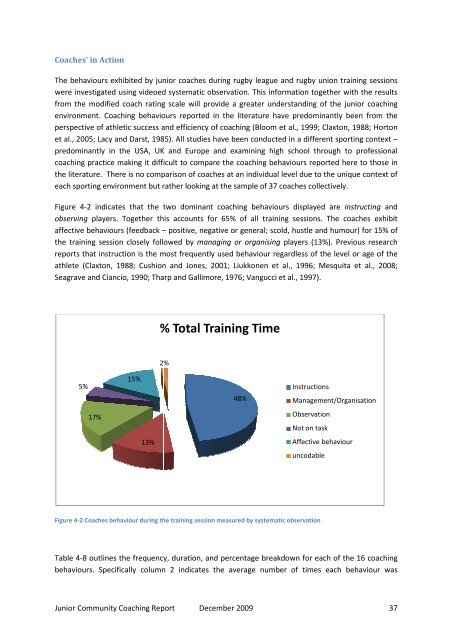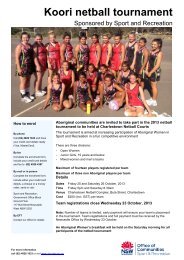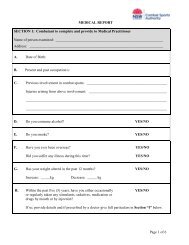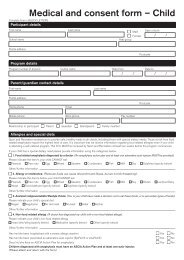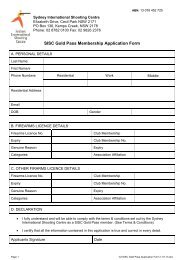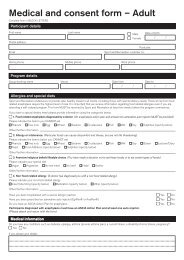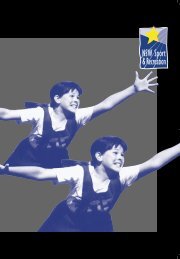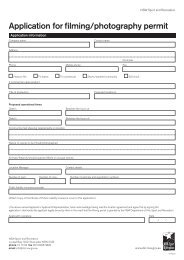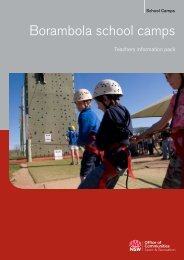Community Junior Sport Coaching final report - 2009
Community Junior Sport Coaching final report - 2009
Community Junior Sport Coaching final report - 2009
You also want an ePaper? Increase the reach of your titles
YUMPU automatically turns print PDFs into web optimized ePapers that Google loves.
Coaches’ in Action<br />
The behaviours exhibited by junior coaches during rugby league and rugby union training sessions<br />
were investigated using videoed systematic observation. This information together with the results<br />
from the modified coach rating scale will provide a greater understanding of the junior coaching<br />
environment. <strong>Coaching</strong> behaviours <strong>report</strong>ed in the literature have predominantly been from the<br />
perspective of athletic success and efficiency of coaching (Bloom et al., 1999; Claxton, 1988; Horton<br />
et al., 2005; Lacy and Darst, 1985). All studies have been conducted in a different sporting context –<br />
predominantly in the USA, UK and Europe and examining high school through to professional<br />
coaching practice making it difficult ficult to compare the coaching behaviours <strong>report</strong>ed here to those in<br />
the literature. There is no comparison of coaches at an individual level due to the unique context of<br />
each sporting environment but rather looking at the sample of 37 coaches collectively.<br />
Figure 4-2 indicates that the two dominant coaching behaviours displayed are instructing and<br />
observing players. Together this accounts for 65% of all training sessions. The coaches exhibit<br />
affective behaviours (feedback – positive, ive, negative or general; scold, hustle and humour) for 15% of<br />
the training session closely followed by managing or organising players (13%). Previous research<br />
<strong>report</strong>s that instruction is the most frequently used behaviour regardless of the level or age of the<br />
athlete (Claxton, 1988; Cushion and Jones, 2001; Liukkonen et al., 1996; Mesquita et al., 2008;<br />
Seagrave and Ciancio, 1990; Tharp and Gallimore, 1976; Vangucci et al., 1997).<br />
% Total Training Time<br />
2%<br />
5%<br />
15%<br />
48%<br />
Instructions<br />
Management/Organisation<br />
17%<br />
Observation<br />
Not on task<br />
13%<br />
Affective behaviour<br />
uncodable<br />
Figure 4-2 Coaches behaviour during the training session measured by systematic observation<br />
Table 4-8 outlines the frequency, duration, and percentage breakdown for each of the 16 coaching<br />
behaviours. Specifically column 2 indicates the average number of times each behaviour was<br />
<strong>Junior</strong> <strong>Community</strong> <strong>Coaching</strong> Report December <strong>2009</strong><br />
37


